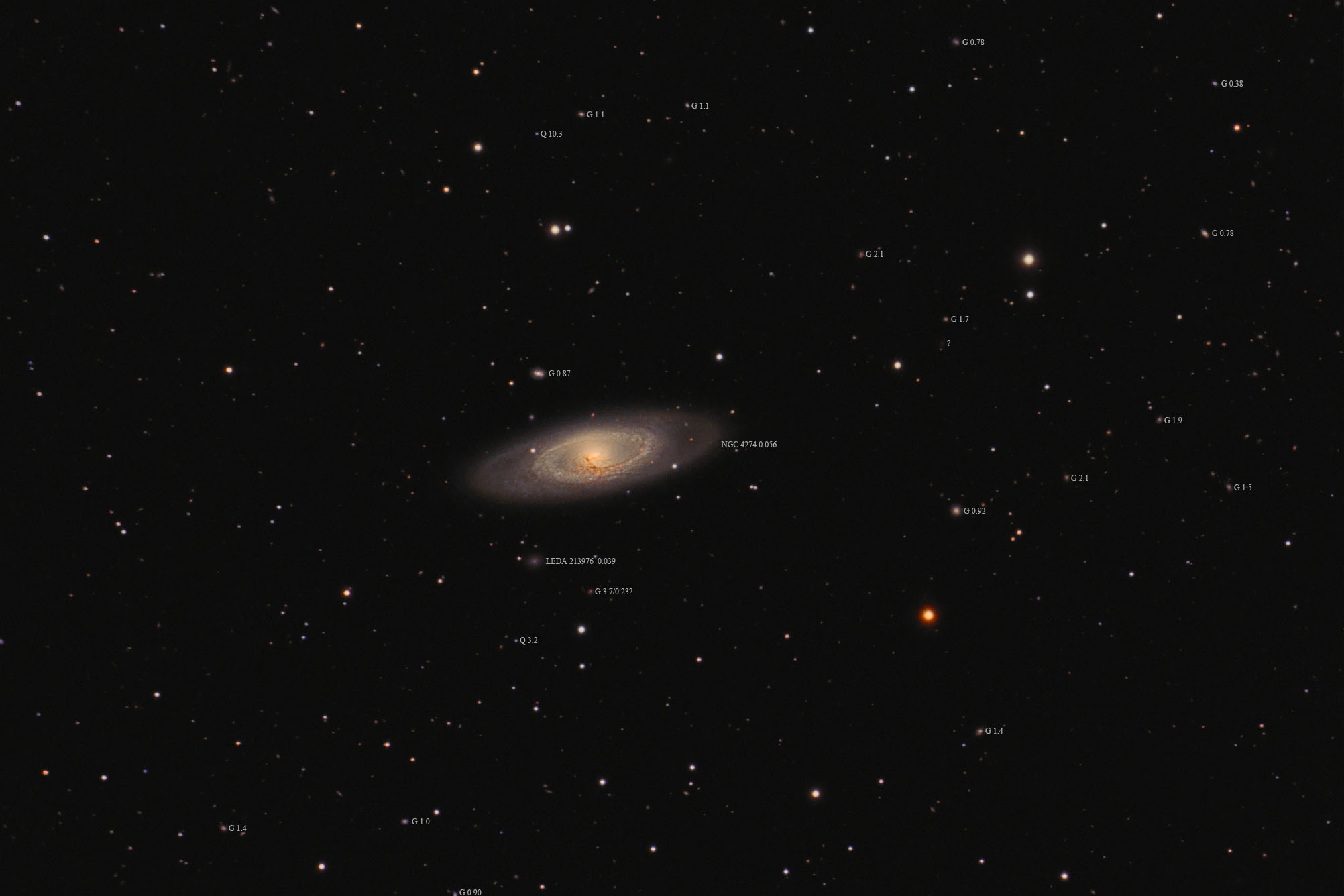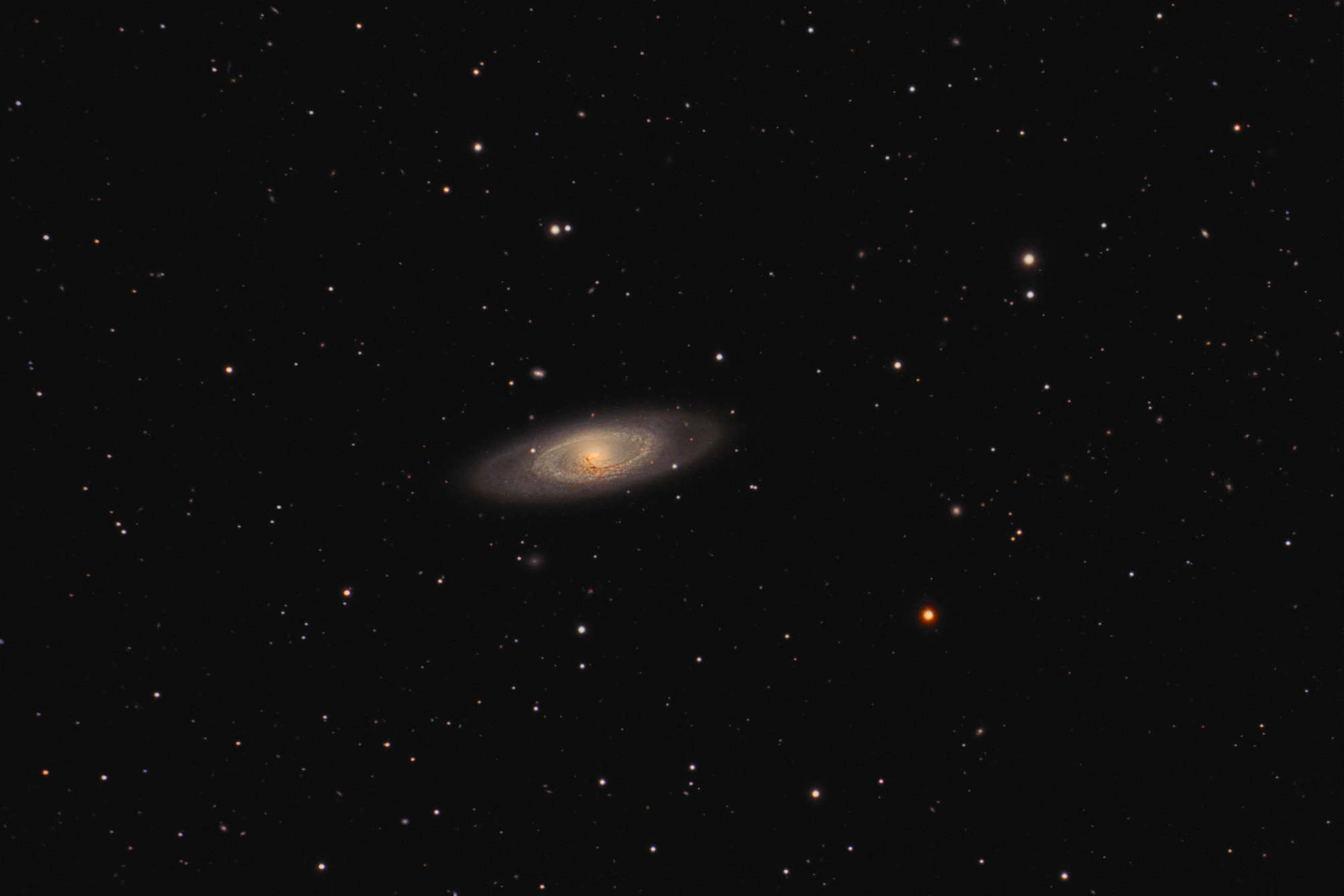| Description | Images |
Object name: NGC4274Designation(s): NGC4274, NGC 4274 is an odd barred spiral in Coma Berenices about 50 to 60 million light-years distant by redshift. Other measurements put it much closer or further but also average about 55 million light-years. If correct it is likely a member of the Virgo Cluster. It is classed as (R)SB(r)ab LINER. What drew my attention to it is the odd dust lane that suddenly veers in toward the core of the galaxy. Dust lanes down a bar are common but these don't also follow the spiral arm pattern. Also, they are usually rather weak compared to the dust lanes in the spiral arms. This one is a narrow lane that seems to define the inner edge of the spiral arms that form a ring-like structure getting strong as it approaches the bar then suddenly veers across the bar and toward the side of the core. The core is oval but at nearly right angles to the bar with each end rather pointed. The dark lane runs to one of these pointed ends. In IR light papers indicate there's an inner bar and ring structure at nearly right angles to the large outer bar and ring. This apparently is what is causing the bright core region to be misaligned with the main bar. Related Designation(s):2MASS J12195059+2936529, 2MASX J12195066+2936529, 2MASXi J1219506+293653, AKARI J1219506+293656, CGCG 1217.3+2954, CGCG 158-071, Coma I GROUP:[TT2002] 01, FIRST J121950.8+293653, HDCE 0706 NED057, IRAS 12173+2953, IRAS F12173+2953, KISSR 0027, LDCE 0867 NED100, LGG 279:[G93] 004, LQAC 184+029 014, MCG +05-29-060, NGC 4274, NGC4274, NSA 141155, NVSS J121950+293652, PGC 039724, RSCG 51:[WBJ2013] A, SDSS J121950.59+293652.9, UGC 07377, USGC U478 NED15, UZC J121950.6+293651, [M98j] 173 NED03, [VCV2006] J121950.6+293650, [WTK2001] J121950.60+293649.2 , |


